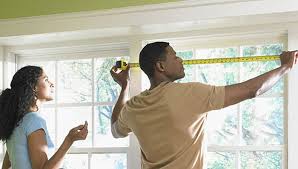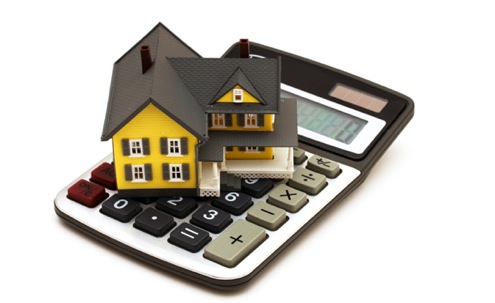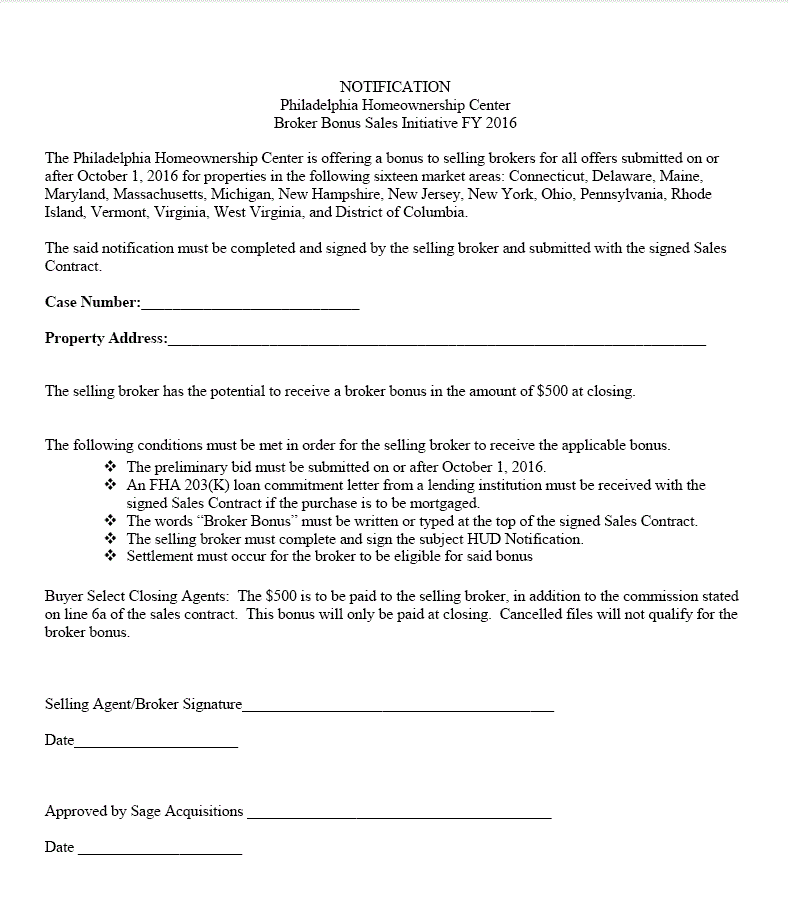4 minute READ Inman News Article
Brandi J. Newland – RE/MAX on Stringtown Road | 2051 Stringtown Road Grove City, Ohio 43123 |614.778.4520 | SpecialAgentBrandi@hotmail.com
You’re in the listing presentation, showing your potential clients the comparable listings in their neighborhood and making a recommendation about price, and it comes — the statement you’ve been dreading: “But Zillow‘s Zestimate puts our house at $X higher than that price.”
Clearly these sellers didn’t read the company’s own fine print on its value calculation mechanism — so you can point them to that, or respond as Anne M. Rubin suggested in a session at Century 21’s One21 conference this year:
“Are you familiar with how Zestimates work?
“Zestimates take the deed recordings in a geographic area to determine the number. They don’t include the condition of the home or any upgrades. They can often be too high or too low.
“I will supply you with accurate information from the MLS, which includes interior photos, of the properties that are most likely to be seen by buyers when they are also looking at your house. In addition, I can show you the recent sales in the area that appraisers will look at when they’re determining the value of your house from the buyer’s mortgage company.
“Don’t you want the best information available when you decide how to price your house and when to place it on the market?”
And here are a few more options for how to tackle that objection, sourced from a discussion on Inman’s Coast to Coast Facebook Group.
What’s included — and what’s not
The data sets used to create the Zestimate are cleaned up before numbers are crunched, explained Zillow senior managing economist Skylar Olsen — for example, any properties transferring ownership to and from people with the same last name (indicating a family deed transfer) or involving an unusually high or low sales price will get flagged.
Foreclosures, auctions and quit claims are also removed, and the Zestimate algorithm uses the remaining property data and relevant prices to come up with the magic number — which, Olsen notes, is an estimate.
“The estimate is going to have an associated band of error,” she said. “If there are more transactions in their area, good data in their area, if the homes are more similar to each other, if all homes are in a similar place and similar quality, then the Zestimate is usually pretty close.”
However, “quality is very hard to capture,” Olsen added, “which is why we’re pursuing major machine-learning techniques to elicit new signals.”
‘Have you claimed your house on Zillow? Because if not …’
Olsen notes that the Zestimate data comes from primary sources like the assessor’s office. “We use a lot of public records to power and estimate the statistical models,” she said, “and then what we use to score your Zestimate is not just those public record details but also user-inputted data.
“Incomplete information is really where we see the largest error,” she added. “When we have to infer how many bedrooms or bathrooms there are because the county didn’t put in that data.”
And sometimes, Olsen says, the records are coming from two different sources that record different features of the property.
So if the client has simply pulled up her address on Zillow without claiming the home, she may have no idea what Zillow “knows” about the property — and whether that’s accurate information.
‘Has Zillow been inside your house?’
Most reasonable humans will understand that in order to accurately value a property, it should be visited and examined — inside and out.
“Zillow has never been in your home,” suggested Gaithersburg, Maryland-based agent Scott Leidner as a potential response.
“Has anyone from Zillow ever actually been inside your house, or did they do a property tour?” added Lakeland, Florida’s Bill Kilpatrick.
Ashley Dortch, an agent in Locust Valley, New York, took her suggestion a step further: “Has Zillow been inside of your house and all of the homes it’s using for comps? Well, I have.”
Fullerton, California, agent Erica Boisvert suggested asking sellers whether they’d updated their home’s information on Zillow and reminding them that it’s a mathematical guess in addition to throwing in the statement, “Zillow has never walked your home, the comps or the neighborhood.
“Have you updated Zillow as a homeowner?” she added. “No? Then it’s just a mathematical guess.
“This is what I’ve seen in your neighborhood …” (A beautiful segue to demonstrate your value to potential clients, if we do say so.)
And Philadelphia agent Dennis McGuinn threw in a mention of the inexact nature of house pricing, which can never hurt when it comes to a discussion about Zestimates and other automated valuation models (AVMs).
“There’s no perfect science to pricing a house. But at least I’ve been to your house to see what it offers a buyer. Has Zillow been here?” he recommends asking. And closing with: “And what happens to Zillow if the Zestimate is wrong?”
“Ultimately we’ve never been inside the house,” noted Olsen, “and there’s so much nuance to what’s valuable to a home and cues people to think ‘Gosh, I really like this — I want to bid more.’”
‘Is Zillow going to put in an offer?’
Twin Cities broker Teresa Boardman put it pretty bluntly: “Zillow isn’t going to buy your house, now, are they?”
“Sell it to Zillow!” chimed in Scott Geller of Bensalem, Pennsylvania.
Homing In CEO Todd Miller had an even more tongue-in-cheek way to phrase it:
“You should accept Zillow’s cash offer for your house immediately!”
‘Doesn’t matter what Zillow (or I) think — it’s what buyers think’
Michael Tessaro in San Jose, California, gets straight to the heart of the matter with his objection handler.
“Doesn’t matter what I think or what Zillow thinks,” he suggests telling sellers. “All that matters is the offer you receive from a buyer. You sign it and we close the sale — that’s what your house is worth.”
Not the only AVM in town
Flagstaff, Arizona, agent Emmy Simpson offers a simple, “Let me show you how AVMs work …”
This can be effective because many different brokerage and other real estate companies now offer AVMs — and often they are backed by a big brand that the consumer will recognize.
Explaining how and why each valuation is different can help build trust with your sellers (and show that you really do understand the nuances of pricing).
Point out the numbers game
Marblehead, Massachusetts-based agent Jack Attridge uses math to illustrate how difficult it is to land on the right price at the right time.
“I have a hard enough time pricing homes one at a time,” he tells sellers. “And it is impossible for the local assessor to accurately price the 9,000 homes in my market.
“That is why they tell you that when you get serious, you should reach out to a local agent like myself.”
Get under the hood
Chicago-based team lead Leslie Ebersole points out that this conversation is an opportunity to “validate the work the client is doing on their own behalf and then to demonstrate agent expertise.”
It’s a bad idea to argue with the Zestimate or bash the company behind it, she adds. “Millions and millions of consumers trust Zillow more than they do real estate agents.”
She suggests using this script: “Millions of consumers visit Zillow every month. Most understand that the Zestimate is exactly that — an estimate of the value of the home. Let me show you how the Zestimate is calculated and the Zestimate Data Accuracy table.”
This gives the agent a chance to explain why a Zestimate is “a good starting point as well as a historical reference, but should not be used for pricing a home,” Ebersole noted.
Anne Marie Vespo in Chicago points out to sellers that the Zestimate is based on numbers — namely, the property’s physical attributes, tax assessments and prior and current transactions.
“So if you have a neighborhood of older, smaller homes with a few teardown, new-construction homes, it may bring the value of one up and the other down — but it doesn’t mean it’s accurate as they’re not taking into account what is inside the home,” she pointed out.
Zestimates might be more accurate “in planned-unit developments with cookie-cutter homes, or townhouse and condo communities,” she added, but the Zestimate still doesn’t encompass updates or improvements.
‘Great place to start!’
Your seller has gone to the trouble to educate himself or herself about the potential price of the property in question — so applaud their impulse and use that as a jumping-off point to showcase what tools you have that could help.
Kailua-Kona, Hawaii-based Lance Owens usually begins with, “Great place to start, Seller! I love clients who do their homework and actually put effort into selling the home.”
Then, he says, he pulls up Realtors Property Resource (RPR) and offers to go over the comparative sales in the area, showing sellers with their own eyes what’s happening in their market.
Figure out why the Zestimate doesn’t align with your price
For Jim Weix in Palm City, Florida, the Zestimate is an opportunity to show your clients how much you know (and how much a computer can’t) about their property and area.
“If the Zestimate is off, it will normally be easy to see why,” Weix said. “Zillow doesn’t know the difference between a deep-water ocean-access canal and a glorified ocean-access drainage ditch, since both show up as ‘ocean access canal’ properties.
“Rather than attack or simply reject a Zestimate, it is quite simple to show the errors in it,” he noted.
And showing instead of telling always wins fans, no?
Dig up the past
When Spencer Rascoff sold his Seattle home for significantly less than the Zestimate price, he “may have … given real estate agents a gift they won’t soon forget,” wrote Teke Wiggin at the time.
A few agents revealed that they haven’t yet forgotten the gift and are still using the sale to showcase the potential pitfalls of relying solely on a Zestimate to their clients.
Bottom line: Never take an overpriced listing
“Are there any reasons besides the Zestimate why you think your house is worth that amount?” offered Juan Gabriel Molina of Oxnard, California.
“Tackle the objections, present the data and market facts.”
One thing you should never do, though, is agree to take on an overpriced listing, he added.
“If they’re unrealistic and not motivated, simply tell them you cannot assist them at this time,” he advised.
Inman News Article
Brandi J. Newland – RE/MAX on Stringtown Road | 2051 Stringtown Road Grove City, Ohio 43123 |614.778.4520 | SpecialAgentBrandi@hotmail.com













 Did your house get appropriately appraised? Is it too high? Or to low? Well here is what you need to know. This is courtesy of the Franklin County Auditor.
Did your house get appropriately appraised? Is it too high? Or to low? Well here is what you need to know. This is courtesy of the Franklin County Auditor.












